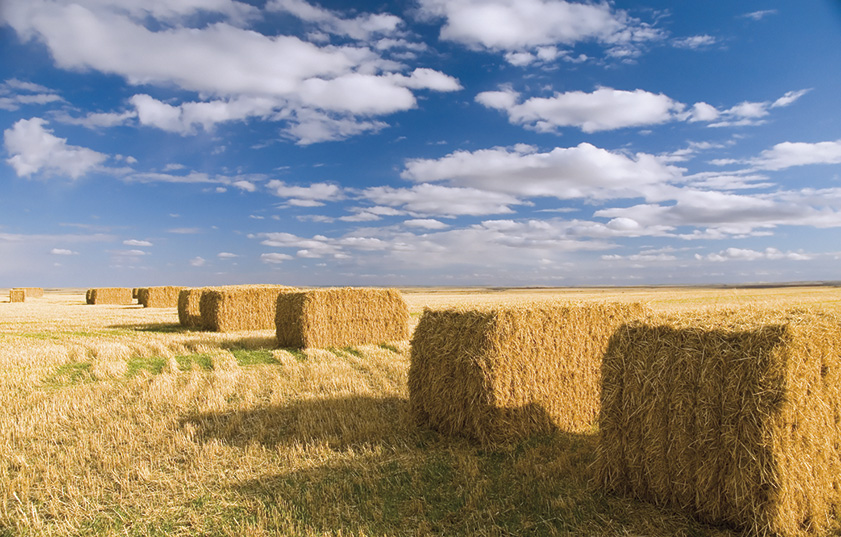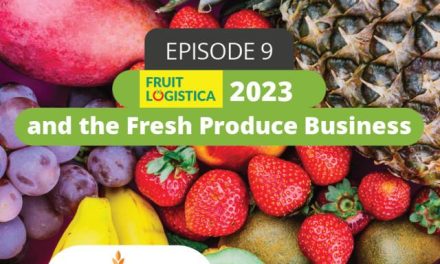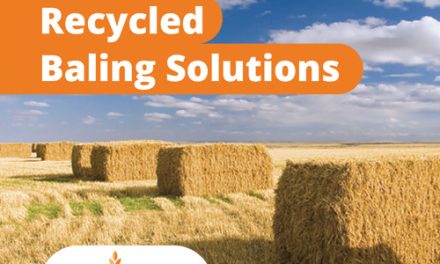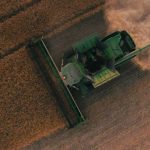
Baler twine: what is it, advantages, and a case study

Today it is widely accepted that baler twine emerged as an excellent option to address the need for farmers to collect and store some of the cereal crops, which serve as food for livestock. The idea behind it, aside from better organizing and storing livestock feed, is to be able to give more space to livestock to graze and move within the fields.
The uses that can be given to baler twine are diverse. Today, some farmers use the twine not only to pack cattle feed bales, but also to replace the metal wire of their fences, so they manage to keep the animals sheltered and separated, but without the risk of being hurt by loose wiring.
If you have any doubt about prices, options, where to buy baler twine for your business, please don’t hesitate to contact our expert.
Raw materials for baler twines
One of the benefits of baler twine is that it’s made from plastic polymers, which make it more manageable, safe, practical, environmentally friendly and a great ally in terms of capital savings.
There are several components used in the production process of baler twine, and among the main raw materials are polypropylene (PP), which becomes the basis that guarantees the requirements to obtain a twine of high strength and softness that can adapt perfectly to its final use.
There is also the dye that gives the twine the desired colour, according to the needs of the crop or the materials to be packed. Once the colour has been chosen, the UV protection level should be adjusted, using UV additives that help protect the twine from premature degradation as a result of ultraviolet radiation.
The production process of baler twine
To produce the baler twine, it’s necessary to transport the required raw material to the dosing system, where the percentages acting in the mixture will be regulated.
Then, the extrusion is performed to melt the raw materials, applying pressure and temperature as they pass through the extruder. When the material has melted it begins to flow through a flat head to form a sheet of PP.
The resulting melted PP sheet is then cooled and stabilized through a system of refrigerated rollers. The sheet is cut with blades that that will section it into strips of different widths, depending on the type of twine being manufactured.
The material is then oriented to stretch it at medium temperature, increasing its toughness, elongation, and resistance. Subsequently, rollers stabilize and temper the rope during cooling to avoid internal residual stress on the winded twine.
Softness should be verified to improve the handling and flexibility of the twine obtained, making it less rigid and more functional. Depending on the requirement, some twines are fibrillated to leave them as a mesh and others are scratched to leave them with the structure of a string.
Then, the twine is twisted into the cylindrical shape of a rope, increasing the breaking strength. The number of twists per meter depends on the type of rope. Finally, it is packed to form a coil and palletized for commercialization.
There are currently several companies that manufacture baling twine. However, Reyenvas, the renowned Spanish company belonging to the Armando Alvarez Group, has become the leading producer in Spain of polypropylene twines and raffia. Its products are specially designed for use in baling machines and are approved by the world’s leading manufacturers of this type of machinery.
The company has evolved along with the baler industry to offer products that meet the demands of today’s agricultural market. Its products, such as the baler twine, combine high baler density and adequate length to achieve an optimum cost per bale.
What properties should a quality baler twine have?
- UV protection adapted according to the requirements of the region where it will be used.
- Manufactured using selected high-quality raw materials.
- Resistance to knotting, a determining factor in thicker formats, as it guarantees high press density.
- Constant and homogeneous quality.
- Perfect winding, which optimises the space inside the box of the machine where it will be placed.
- Softness, as this will allow you to get more grip on the knot and reduce machine wear since there is less friction.
- Ensure a faster machine application without losing effectiveness.
The durability of baler twine
This is one of the most relevant aspects to consider, along with the resistance to degradation due to the UV radiation from the sun. Hence the importance of defining the colour of the rope and the exposure area where it will be used during the manufacturing process since solar radiation will vary in each country.
To achieve the necessary duration and UV resistance for each use, different quantities and types of stabilizing additives (anti-UV) are generally added. The colours of baler twine that can be found in the market are diverse (blue, green, yellow, orange), everything will depend on the use it will have and the type of baling machine where it will be used.
The most stable and durable colour is black, being one of the most popular, especially in high solar radiation climates.
While it is important to consider the type of machine to be used -hopefully, a high technology machine- it is also essential to carefully select the type of baling twine to take full advantage of the benefits of the latest machinery and tools available on the market.
Attributes to consider in baler twine:
- Tenacity or strength.
- Correct weight and dimensions, as well as a meter weight ratio. Consider the weight with respect to footage because it will allow you to load more twine coils in the machines, saving time for the silage process.
- Resistance and elongation at breakage. Especially important when applied to pressed fodder.
- Manufacturing title.
- Durability.
All these attributes can be evaluated in the labelling of the twine coils to get a clearer and more defined idea of the use you can give to the product. This way, you can make the smartest decision to get the most out of state-of-the-art machinery.
When it comes to using baler twine, for example, in square bales, there is a trend to use larger and more pressurized bales, which require heavier and stronger qualities when using thick twines between 130 and 450 m/kg.
In the case of round balers, twines that are not knotted are required, so loop strength is not a relevant factor. Here it is common to use packaging meshes that use fine twines from 600 to 750 m/kg. When it comes to pressed fodder, which requires extra-thick twines of about 80 to 100 m/kg., there are twines designed for forage pieces that apply very high pressure and require a very high resistance in the twine.
For more information on this topic, we recommend reading our article on the latest technology in farm machinery and baler twines for crop packaging.
Tests performed on baler twine
Although the baling twines manufactured by Reyenvas, a company of the Armando Alvarez Group, have become popular due to their quality standards and great versatility, some more experienced users have taken the initiative to carry out tests so that other farmers can see what these twines can do once they are placed in the baling machines.
Such is the case of the Youtuber, One Lonely Farmer, who performed a test through a demonstrative video with the Max2Twine, PowerPress and the Black Label Twine which is made of recycled post-industrial material, all of them are manufactured by Reyenvas. We invite you to read more about recycled baling twine (PCR).
He activated two balers to which he attached two twines, one with recycled black (Black Label Twine) and the other virgin blue twine (PowerPress). When the machinery was activated, the blue twine performed very well and did not present any mechanical problems, such as the twine getting stuck in the system for example.
In the case of the Black Label Twine -recycled- he noted that without adjusting the machinery, he obtained excellent results in terms of bale density and in general, without twine problems. He managed to bale a total of 192 bales. Below is the full video showing in detail the results obtained during the test.
There were no inconveniences with the machinery when cutting the twine, as the baler twines of Reyenvas performed quite well.
Recommended baler twines:
If you have any doubt about prices, options, where to buy baler twine for your business, please don’t hesitate to contact our expert.





![[eBook] Sustainability and water management](https://agriplasticscommunity.com/wp-content/uploads/8_550x310_ENG-440x264.png)
![[eBook Trends in Agriculture Plastics] Increasing use of biodegradable mulch](https://agriplasticscommunity.com/wp-content/uploads/550 × 310_2_ENG-440x264.png)
![[eBook Trends in Agriculture Plastics] Reducing the plastic used in the manufacture of agricultural films](https://agriplasticscommunity.com/wp-content/uploads/550 × 310_1_ENG-150x150.png)




















